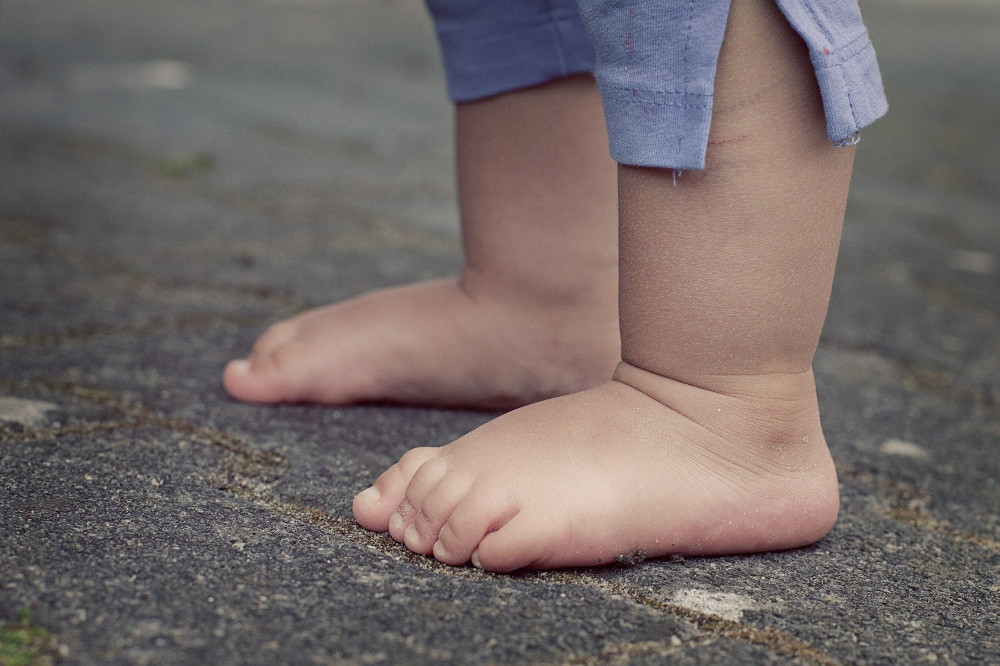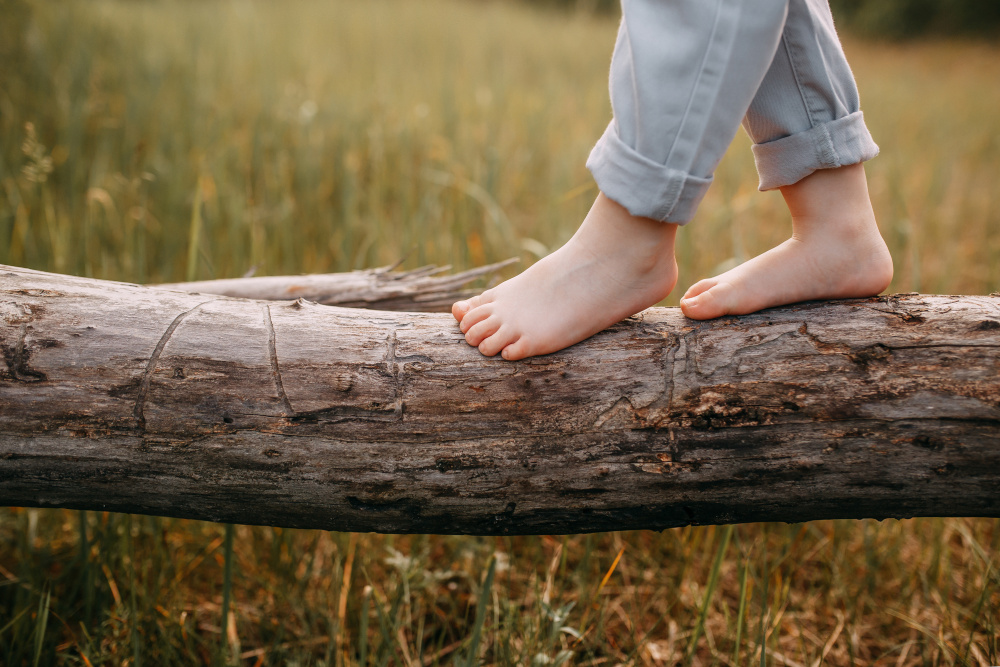YOUR CHILD’S FEET
The arch of the foot is the curve on the bottom of your foot, between your big toe and your heel. Almost all typically developing children are born with flexible flat feet. Despite this common foot type in children, parents often seek expert opinion on whether their child’s feet are something to be concerned about.
In my experience the arch develops in children by age 6 but I have seen development in children younger than that. And some children still have flat feet at age 10 or even into their teens. Arch development tends to increase in height with increasing age. Still, the odds are if you have flat feet as a parent, one or more of your children will too.

Not every adult with flat feet has pain or deformity. But generally speaking, flexible flat feet are more likely to have low back, leg or foot pain, bunions, calluses, hammertoes, and degenerative arthritis.
According to The Canadian Paediatric Society, if your child has flat feet and does not have any pain or discomfort, then orthotics and orthopaedic shoes are probably not necessary. It may be a different story however, if your child complains of pain while walking or being active on their feet.
When should you treat flexible flatfoot in children, is still an open question. With all my decades in practice, there is still no absolute scientific measurement for when the child’s arch is too low and should be treated. With no pain and normal participation in activities, a flexible flat foot that functions normally is considered a variation of normal.
When there is discomfort in the lower limb or foot, associated with activity, that’s when some form of intervention is prudent. Treatment will range from simple stretches and strengthening exercises, to physiotherapy, arch supports or foot orthotics.
The causes of flexible flat foot in children include heredity, genetic disorders, and obesity. And childhood obesity is increasing dramatically in Canada. Obese children are 5 times more likely to be obese adults. Obese children with flat feet are less active and even less likely to be active as adults.
There are many health and social problems that obesity can lead to, including Type II Diabetes, heart disease and low self esteem. But too much weight can also lead to negative impacts on bone, joint and muscle health. Obese children are more likely to not only have flat feet, but more often suffer from pain in hips, knees and ankles.
Injuries to growth plates are more common in obese children or children with flexible flat feet. But not all children who suffer growth plate injuries have flat feet. Growth plate injuries can also be caused by overuse and the symptoms are often made worse by poor foot posture, known as overpronation.
Pronation is a normal element of our walking cycle or gait. It is a mechanism of shock absorption, and transfer of energy that occur when our foot hits the ground. Essentially, when our foot is planted on the ground the arch of our foot lowers, the ankle rolls toward the ground and our shin and knee rotates inward. All this occurs in less than a second before the process reverses and we push off the ground into the next step. Overpronation refers to excessive motion of these stages or pronation that exists for too long during each footstep.
Slipped Capital Femoral Epiphysis is an injury within the child’s hip. The head of the femur(thighbone) slips off in a backward direction at the growth plate, causing hip pain, and may result in a leg length discrepancy if not treated successfully. Obesity and flexible flat feet increase the risk of occurrence and complicate recovery.
Sever’s Disease is a common source of heel pain in children. It is a disorder that affects the growth plate at the back of the calcaneus (heel bone), usually during a growth spurt. Intense activity like running and jumping can contribute to inflaming the growth plate (apophysis). It is more common in boys and typically presents during the ages of 8-14. Although the pain settles down with reduced activity it is not uncommon for it to recur after a prolonged period of inactivity. The classic scenario of a winter of not playing baseball or soccer, the pain is forgotten, only to come back again with spring league start up. The condition eventually disappears when the growth plate changes to mature bone. Calf stretches, physiotherapy and foot orthotics that address the foot mechanics are all treatment options.
Kohler’s Disease is a disorder that occurs at the top of the arch on the inside of the ankle. It is an inflammation of the growth plate of the navicular bone. It is more common in children with flexible flatfeet or overpronated feet. Foot orthotics are very effective at mitigating the discomfort.
Osgood-Schlatter’s Disease is a disorder in which there is pain in the front of the knee. It affects the growth plate at the top of the tibia (shin) where the patellar tendon attaches to the bone. The tender area becomes swollen and a painful bump may occur. Like Sever’s, this condition will resolve with maturity, but the bump may exist through one’s lifetime. Quadriceps stretches, a patella stabilizing brace, or a patellar tendon strap and foot orthoses are effective treatments.
Jumper’s Knee is known by a couple different terms. It may be referred to as patellar tendonitis or Sinding-Larsen-Johansson disease. Either way, it is a stress reaction at the base of the patella (kneecap) where the patellar tendon attaches to it. It is more common in jumping sports. Again, physiotherapy and quadriceps stretches can be helpful as will a patellar strap and foot orthotics.
Patellofemoral pain syndrome, or chondromalacia patellae, refers to irritation to the cartilage under the patella (kneecap). Typically, the patella is not gliding properly in the groove of the femur (thigh bone) at the knee joint. The causes include weak hip or thigh muscles, or poor foot posture. Treatment may be one or all of patella stabilizing braces that improve kneecap alignment, foot orthotics to address the foot mechanics and physiotherapy to treat the muscle weakness.
With any of these conditions, proper diagnosis is key. You should take your child to your doctor for a thorough evaluation. Your doctor will direct you to seek physiotherapy, possibly refer your child to an orthopaedic surgeon or refer you to Ortho-Kinetics for the appropriate device, including bracing, non-custom shoe inserts or custom foot orthotics.

